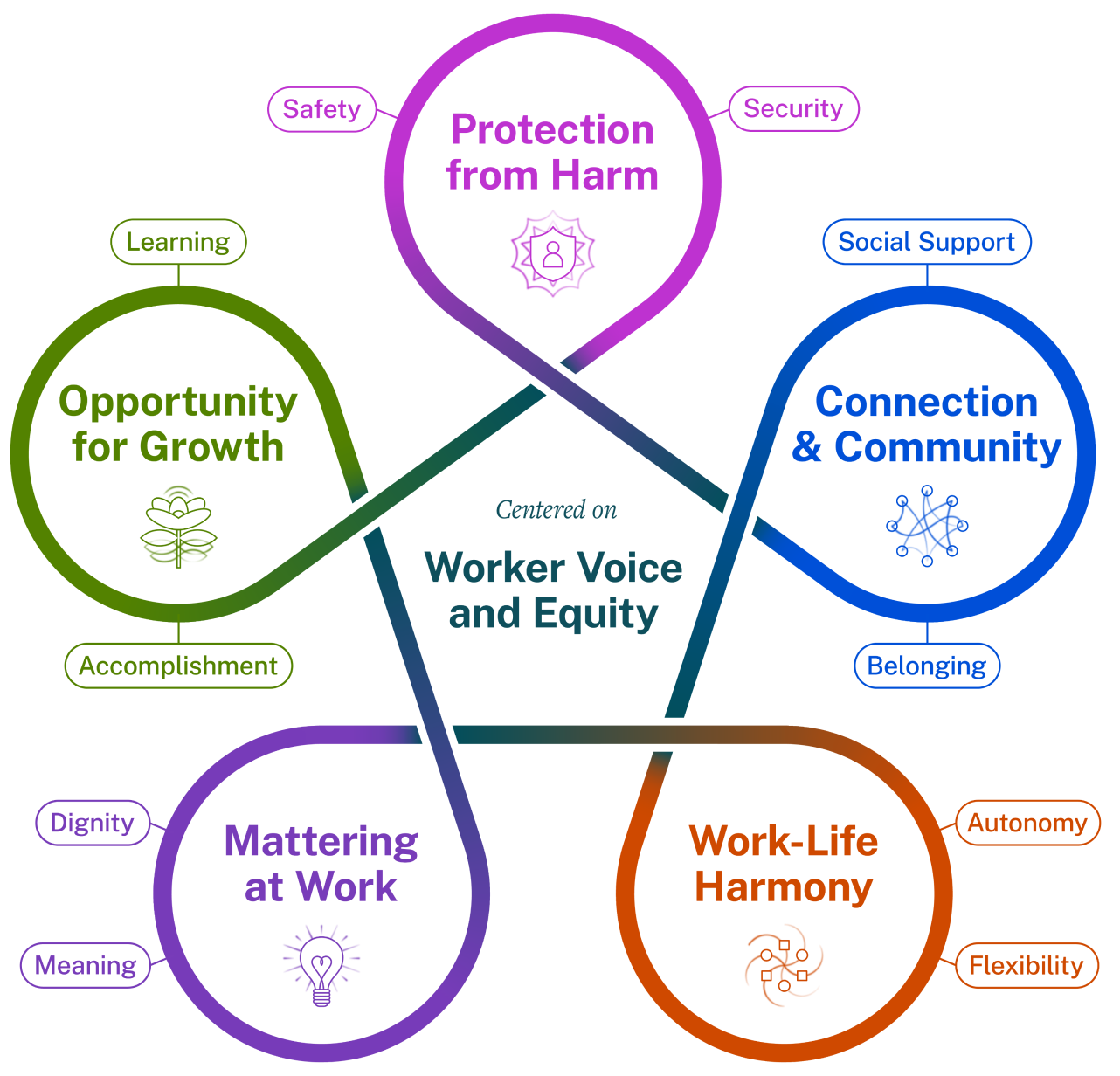Unhealthy corporate cultures are like a tooth that’s decaying from the inside out.
Looked upon from above, everything might look fine. But a deeper dive from an experienced professional (in our metaphor, a dentist) can quickly reveal a serious problem. One that if left untreated can have deadly consequences.
For our purposes, that decaying tooth is actually the slow burn of unchecked people issues slowly pulling down the collective culture. In mild cases, this makes work less enjoyable for everyone involved. In extreme cases, you might have a toxic workplace on your hands…
It is essential to keep a finger on the pulse of your corporate culture and how healthy it is. If you’ve been at this for a while, you’ll understand like we do, that this is often easier said than done.
In many cases, the leadership team is the last to recognize that there’s a growing culture issue.
And it’s not because they’re lazy, disengaged or incompetent. In reality, they’re constantly being pulled in dozens of different directions. Meanwhile, who on their team wants to be the one to break the bad news to them that there’s growing discontent amongst the ranks?
Generally speaking, a happy company outperforms an unhappy one. When looking at organizations determined to have an engaged culture, the stats speak for themselves:
- 26% less turnover.
- 20% less absenteeism.
- Twice the unsolicited employment applications.
- A 15% increase in employee productivity.
- A 30% increase in customer satisfaction levels.
In this article, we break down why the word toxic has become used so freely when referring to unhealthy corporate cultures. And, we share our tips for what you can do to avoid that altogether by maintaining a healthy culture. (Or dig yourself out of toxic territory for that matter…)
When it comes to your culture, an ounce of prevention is worth a pound of cure!
Why People Use Toxic When Talking About Unhealthy Corporate Cultures
To put it simply: toxic is used to describe environments that exhibit negative, unsupportive and even abusive behaviour. If your employees start labelling your corporate culture as toxic, you have a major problem on your hands, to say the least…
Depending on the workplace and individual employee, toxic may mean any number of things. For instance, leading by fear or consistent unfairness invoke the word toxic. As might a company culture that tolerates backstabbing, bullying and rampant discrimination.
Whatever the case, an unhealthy corporate culture can be insidious, much like the aforementioned tooth. It can easily elevate stress levels which can, in turn, lead to a number of mental or physical health issues, low morale and public confrontations.
Eventually, a toxic corporate culture will make it increasingly difficult for your team to do their jobs effectively. Infighting and internal politics eventually bring about increases in employee absenteeism and turnover. And make no mistake, both of those things are costly.
In a 2017 study from the National Bureau of Economic Research, 85% of executive-level leaders surveyed said that they believed a poor corporate culture increases the chance that employees will behave unethically… and even illegally. It can also damage a company’s public image, which hinders talent acquisition efforts, lowers client and employee retention levels, and ultimately leads to financial issues in the form of lost revenue or increased costs.
The good news is there are plenty of strategies you can deploy to prevent your corporate culture from sinking into toxic territory. And the sooner you catch things trending in the wrong direction, the better.
How to Recognize if your Corporate Culture is Unhealthy
Like any worthwhile relationship in life, your corporate culture is a constant work in progress. It will never be perfect and that’s okay, but that doesn’t excuse you from working on it.
If you suspect that your culture might have health issues – whether minor or bordering on toxic – you should:
-
- Tune in to employee morale. If you notice that an increasing number of your employees seem unhappy, stressed or disengaged, that’s a red flag. Something is probably smouldering amongst the ranks and needs to be snuffed out before it becomes a full-blown fire.
-
- Track employee turnover data. If you see a sudden uptick, such as back-to-back quarters above the norm, that’s another sign that something is probably wrong with your current culture. If you’re not sure how to do this, you should try out our Turnover Cost Calculator.
-
- Observe your team in action. This doesn’t just apply to in-person work settings. If you’re remote, watch how people interact during video meetings. Pay attention to their tone, how they interact with their teammates and what they do when it’s not their turn to speak. If their camera is always off, why is that?
-
- Reflect on what you (and other leaders on your team) are doing to actively promote a healthy culture. Are you having regular conversations with the team? Do you consistently and intentionally ask for feedback? Are you addressing that feedback, even if there’s nothing you can do about it in the short-term? Do you know each employee’s needs, wants, and goals? (Particularly those that are your immediate team.)
- Research what’s being said about your company online. If you see a lot of negative reviews on websites like Glassdoor, that’s an indication that you likely have a problem. One or two isolated comments probably aren’t worth worrying about, but more than that, or a cluster of recent negative reviews, is worth further investigation.
Remember, your team isn’t always going to report culture issues upwards voluntarily. In a lot of cases, those issues create fears that speaking up will have negative consequences. You have to make an effort to get honest, actionable feedback, and thank people when they provide it.
What You Can Do to Maintain a Healthy Corporate Culture
If you want to build or maintain a healthy corporate culture, the first step is identifying the factors contributing to a positive workplace environment.
According to research done by the U.S. Surgeon General, there’s a framework upon which you build a workplace that supports employees’ mental health and overall well-being. It is centred around your workers having a voice within the organization as well as the general sense that most (ideally all) company decisions are made in a fair and equitable manner. The five essentials of that framework are:
-
- Protection from harm. People want to feel safe and secure from both physical and non-physical harm. They also want security in the form of a certain level of financial and job stability. Prioritizing safety within your policies, ensuring that your staff gets adequate rest, and normalizing support for mental health challenges are all ways to do this. So is formalizing your strategy when it comes to DEIA (diversity, equity, inclusion and accessibility) initiatives at your company.
-
- Connection and community. Fostering amicable, or at the very least respectful, relationships amongst your team is critical. Your people want social support and a sense of belonging within your organization. Creating an environment that encourages people to meet and socialize around work, but also for other reasons, is one way to do this. This includes your leadership team being intentional about setting aside some time every now and then to build relationships across the organization.
-
- Work-life harmony. The term work-life balance has always been a tricky one because it means different things depending on who you ask. For our purposes, work-life harmony means providing your people with as much autonomy and flexibility as reasonably possible. This includes letting them choose how or when work gets done so long as the expectations of their clients and colleagues are met. It also means setting some boundaries around work versus non-work time so that everyone has the opportunity to rest, recharge and take care of personal matters outside of their job.
-
- Mattering at work. Everyone on your team, to some degree or another, wants validation that they matter and that their hard work is having a positive impact. They want their efforts to provide a sense of dignity and personal meaning. Engaging your employees in key workplace decisions and connecting their individual contributions with the mission of your company are ways to go about this. Furthermore, building an environment that celebrates wins and graciously recognizes those who contributed to those wins is integral to building a winning culture.
- Opportunity for growth. Companies that nurture the development of their people will notice that those people are more optimistic and enthusiastic when it comes to contributing back to the goals of the company. This doesn’t mean you have to go around promoting everyone, either. It’s a balance. One side of that balance is providing access to learning opportunities via training, education, mentoring or inclusion in certain projects. The other side is to set and then communicate realistic pathways for career advancement.

Above are the five essential components of workplace well-being. Strong corporate cultures address all of these areas in some manner.
The nuances of how this framework is implemented will vary from one business to another. Your starting point as a business leader is the values you choose to prioritize within your organization. Those values, combined with the framework above, will heavily influence how you create the core policies, procedures, rituals and norms that combine to form the foundation of your culture.
Our Take
The good news is that toxic, unhealthy corporate cultures are preventable and even reversible! Unfortunately, if you believe your culture is currently toxic, or close to it, then you have some work to do. That starts from the top.
Including details about your values and expectations around desired behaviours in your Employee Handbook is a great place to start. This sets the tone and gives everyone a shared resource to refer back to as needed.
Next, you need systems in place to ensure that your team is having regular conversations about their alignment with your company’s goals and expectations. Informally, this can mean encouraging your leadership team and managers to maintain an open-door policy with their respective teams. We recommend Modern Performance Reviews as they have a positive impact on retention, culture and overall performance.
Apart from scheduled conversations, you may wish to conduct surveys to solicit feedback from the team. If you notice certain metrics have declined since the last survey, or start receiving an uptick in “constructive” comments, it may be time for a culture intervention at your company.
Finally, how you go about bringing talent into the organization goes a long way toward shaping the culture. Having a thorough Talent Acquisition Strategy in place ensures you’re attracting people to your company who can not only get the job done but also align with your values.
Of course, what each person considers toxic is subjective. There are cases where an employee simply disagrees with your company’s mission, clashes with coworkers or can’t get behind the goals and objectives they’ve been assigned. In these situations, you’ll be doing everyone a favour (including them) by moving them along to another opportunity.
At the end of the day, leaders who show that they care, encourage transparent two-way dialogue, act quickly when things go wrong and implement proactive strategies will be rewarded with a healthier corporate culture. And a healthy culture is a high-performing one!
Still not sure where your corporate culture stands? We’re here to help.

Lyndsy has been working in the HR realm for over two years and has experience in content management, ghostwriting and copywriting. She holds a Bachelor’s in English and Cultural Studies and considers herself a lifelong learner and passionate storyteller. Regarding modern HR, Lyndsy believes businesses can stand out as ‘top destinations’ for talented people by adopting a people-centred approach and fostering a strong culture; that’s one of the reasons she was drawn to Castle HR!